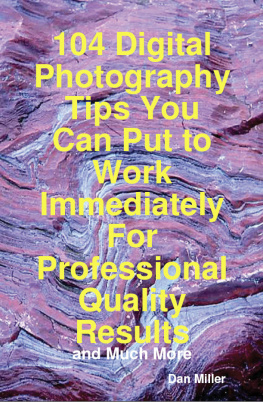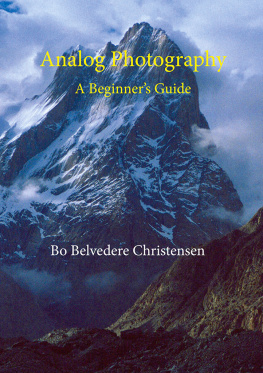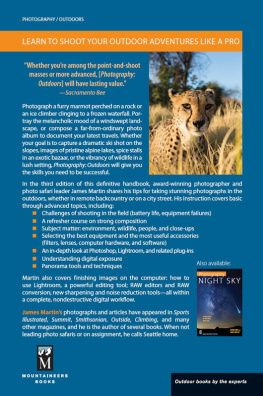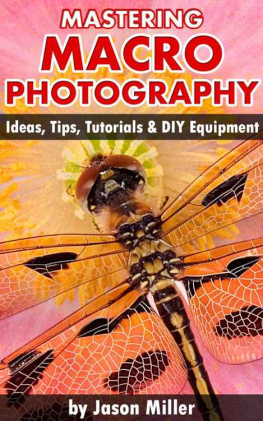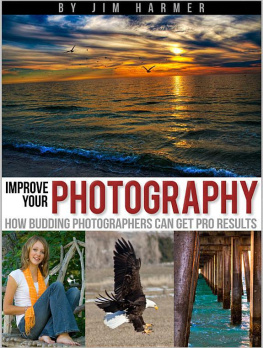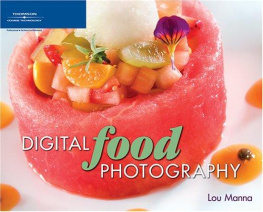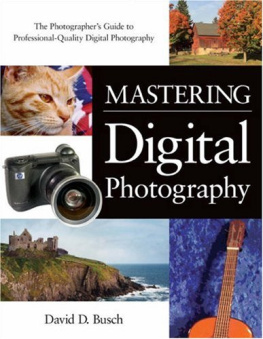Salvatore Ventura - DSLR Photography for Beginners
Here you can read online Salvatore Ventura - DSLR Photography for Beginners full text of the book (entire story) in english for free. Download pdf and epub, get meaning, cover and reviews about this ebook. year: 2019, publisher: Salvatore Ventura, genre: Romance novel. Description of the work, (preface) as well as reviews are available. Best literature library LitArk.com created for fans of good reading and offers a wide selection of genres:
Romance novel
Science fiction
Adventure
Detective
Science
History
Home and family
Prose
Art
Politics
Computer
Non-fiction
Religion
Business
Children
Humor
Choose a favorite category and find really read worthwhile books. Enjoy immersion in the world of imagination, feel the emotions of the characters or learn something new for yourself, make an fascinating discovery.

- Book:DSLR Photography for Beginners
- Author:
- Publisher:Salvatore Ventura
- Genre:
- Year:2019
- Rating:4 / 5
- Favourites:Add to favourites
- Your mark:
DSLR Photography for Beginners: summary, description and annotation
We offer to read an annotation, description, summary or preface (depends on what the author of the book "DSLR Photography for Beginners" wrote himself). If you haven't found the necessary information about the book — write in the comments, we will try to find it.
Take better photos, make better memories.
Have you watched a million videos on YouTube, read a ton of articles, and purchased dozens of books about photography? And yet some things are not quite clear, and you cant put your finger on?
I get it. I was confused like you. Everybody talks about cameras. Very few talk about photography.
This is why I decided to help frustrated photographers like you by putting together a very short book with the concepts that are most important in photography. Nobody tells you that, in the end, theres only a few ingredients to snap the perfect photograph, and a few rules that you can follow to take memorable pictures.
I truly hope that my approach will guide photographers like you on a path of fulfilling discovery and understanding, landing you to your next great photographs.
Salvatore
INTRODUCTION
This book is for beginner photographers who have started exploring a more manual approach to photography and would like some help in making better sense of aperture, shutter speed and ISO, the creative flexibility they offer, and the DSLR as a creative instrument.
If you have been shooting photos primarily in AUTO mode, you are not alone! Most people can use a camera that way with no problem, however many become intimidated the moment they hear terms like aperture or shutter speed.
Rather than going to show you every option of your camera, this book will guide you through the principles that rule photography and exposure, giving you the knowledge and tools to perfectly understand the process and fully utilize the power of your camera.
I believe in teaching at the students pace. Thats why I have divided the book in 10 sections, each covering a single topic, further broken up in smaller chapters. You will also find both color photographs and simplified diagrams that will help visualize the concepts. The book extensively covers the process of composition, what makes a good photograph, and tips and techniques that will point you in the right direction.
By the end of the book you will learn:
and also, advanced techniques like:
Several chapters also include a list of practice exercises that you are encouraged to undertake as a starting point for better learning.
While not overwhelming you with unnecessary jargon, this book doesnt shy away from using the correct technical terminology. I believe that this will ultimately empower you to join future photography conversations that will further grow your expertise and lead you towards capturing your vision into stunning photographs.
Salvatore Ventura: author's other books
Who wrote DSLR Photography for Beginners? Find out the surname, the name of the author of the book and a list of all author's works by series.

